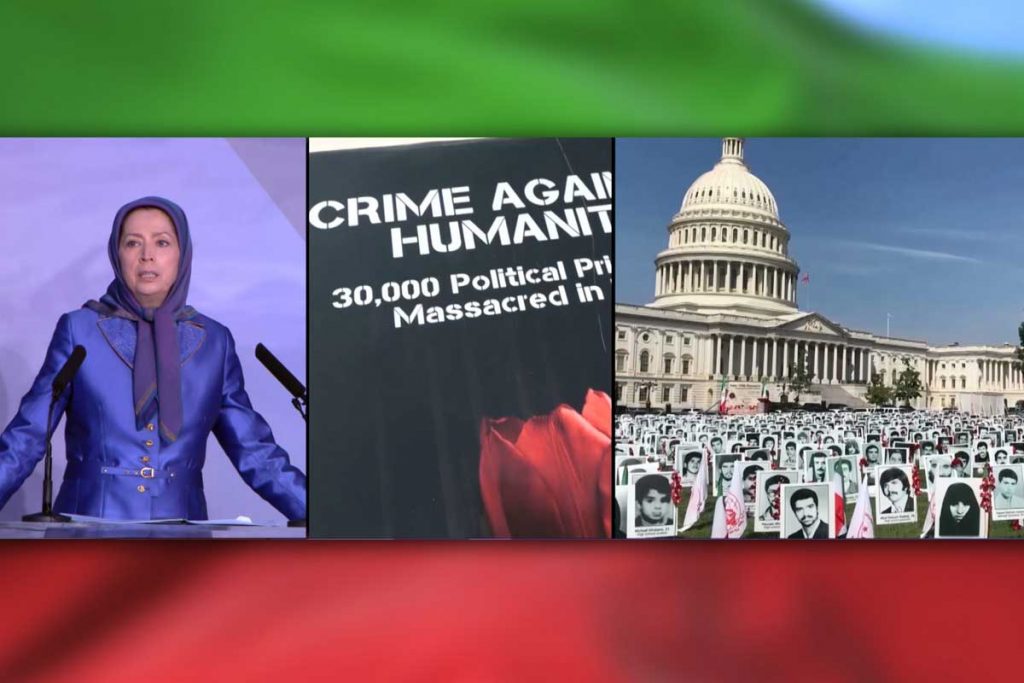
The (NCRI) and (PMOI / MEK Iran)’s beliefs were to always support a democratic alternative to the current theocracy.
This message was spelled out by Morgan Ortagus, spokesperson for the US State Department on July 17th.
Instead of upholding justice, the Iranian judiciary oppresses and violates human rights. We urge the international community and individual governments to provide accountability and pursue justice for the regime's many victims. pic.twitter.com/Mr0HpJuJ5g
— Matthew Miller (@StateDeptSpox) July 17, 2020
She said. “The United States calls on the international community to conduct independent investigations and to provide accountability and justice for the victims of these horrendous violations of human rights organized by the Iranian regime.”
https://www.facebook.com/womenncri/posts/1945413118922665
Ortagus’ statement emphasized two key violations which were:
- July 11th anniversary of the “brutal murder of Iranian-Canadian journalist Zahra Kazemi,” who was taken to prison and tortured for reporting in 2003’s demonstrations in Tehran
- July 19th anniversary of the “death commission” which focused on eliminating Iranian prisoners.
A newly published book about the names of #MEK members killed in the #1988Massacre in #Iran was revealed by Mrs. Rajavi in the European parliamentarianhttps://t.co/9FutV13Hcv@USAdarFarsi #NoImpunity4Mullahs #FreeIran pic.twitter.com/zqsknptIVv
— MEK Iran (Mujahedin-e Khalq) (@MEK_Iran) October 29, 2019
The death commissions
These death commissions came about when a fatwa by the clerical regime’s founder, Ruhollah Khomeini, was released which announced that all organized opposition to the regime would be considered an “enmity against God,” which could attract the death penalty. This was basically targeting the People’s Mojahedin Organization of Iran (PMOI / MEK Iran).
The role of a death commission was to question political detainees at Iranian prisons and decide if due to their incarceration they still disliked the current political system. The MEK’s beliefs were to always support a democratic alternative to the current theocracy.
https://twitter.com/HeshmatAlavi/status/986617611600482304
The protest movement
It was just two years after the overthrow of the shah in 1981 that the MEK held a protest of half a million that marched to the parliament to request minimum freedoms that ordinary Iranians did not have. The regime decided to fire live ammunition on the peaceful protesters to break up the crowd. This was just one of many demonstrations as there were also similar events in 2003 and 2009 protests. More recently, there has been an upsurge in the protest movements which is throwing the regime of its balance when it comes to controlling its citizens.
When there haven’t been street protests the MEK has been quietly getting on with the job of organizing the resistance movement. This has unfortunately led to indiscriminate arrests often leading to executions without even a hint of a trial The (PMOI / MEK Iran) has lost 120,000 members to the regime’s terrorist violence. Of course, once incarcerated there was no way out and this didn’t leave MEK members to doubt their membership of the resistance.
Iran’s New Judiciary Head Represents Clear Disregard 4 #HumanRights
one thing stands out above all others:In 1988 #Raisi was among the officials appointed to three-person “death commissions”#1988Massacre #HRC40#StandUp4HumanRights@UNGeneva@USAdarFarsihttps://t.co/pdjjsDE4Qz pic.twitter.com/xXVqndeeiM— Iran Freedom (@4FreedominIran) March 11, 2019
In fact, far from it, they were even more determined to back up their beliefs of bringing about a democratic and free Iran. This didn’t please the death commission as their job was to get MEK supporters to promise they no longer supported the movement. Because of their dedication, they dug in with their heels and decided to show allegiance to the MEK, not the current regime. This led to constant rounds of executions until the number had toppled 30,000.
The Death Commission started its work in Tehran’s Evin prison on 28 July 1988. The commission operated in both Evin and Gohardasht prisons @JavaidRehman @mbachelet #1988Massacre https://t.co/LXMmZ0ErOZ pic.twitter.com/Cx861miQMU
— Iran Freedom (@4FreedominIran) July 27, 2020
The evidence of these atrocities and breaches of human rights were slowly being concealed as the mass burial sites were turned into numerous construction projects. This has hampered any human rights investigations by the international community who have sat on the fence with regard to condemning or penalizing the regime for these despicable human rights violations. Fortunately, some of the mass graves are known about and have been investigated giving the international community at least some insight into the outrageous hanging of both teenagers and pregnant women.
In 2016, Mrs. Maryam Rajavi, the opposition president-elect initiated a “Justice Seeking Movement” for 1988 massacre victims. Later that year a recording was leaked about the massacre and Khomeini’s likely successor Hossein Ali Montazeri defined the death commissions as a committee that was responsible for the “worst crime of the Islamic Republic.” Montazeri lost his position because of his statements and the remainder of his life was under house arrest, while those more directly involved in the massacre were allocated more influential positions.
I urge the international community, especially the United Nations Secretary-General and other #HumanRights organizations to intervene immediately to stop the executions, secure the release of the prisoners, and prevent a major humanitarian catastrophe in prisons #Iran pic.twitter.com/6KGQDzPQm0
— Maryam Rajavi (@Maryam_Rajavi) July 29, 2020
